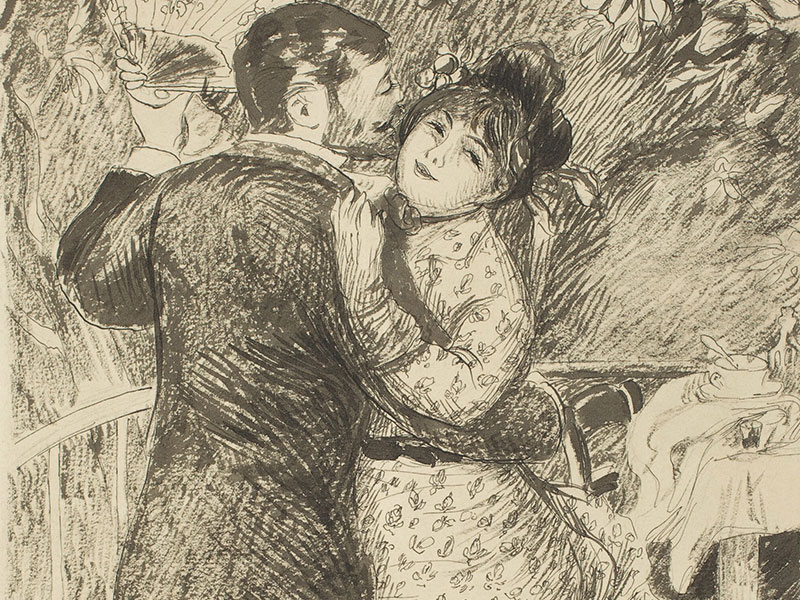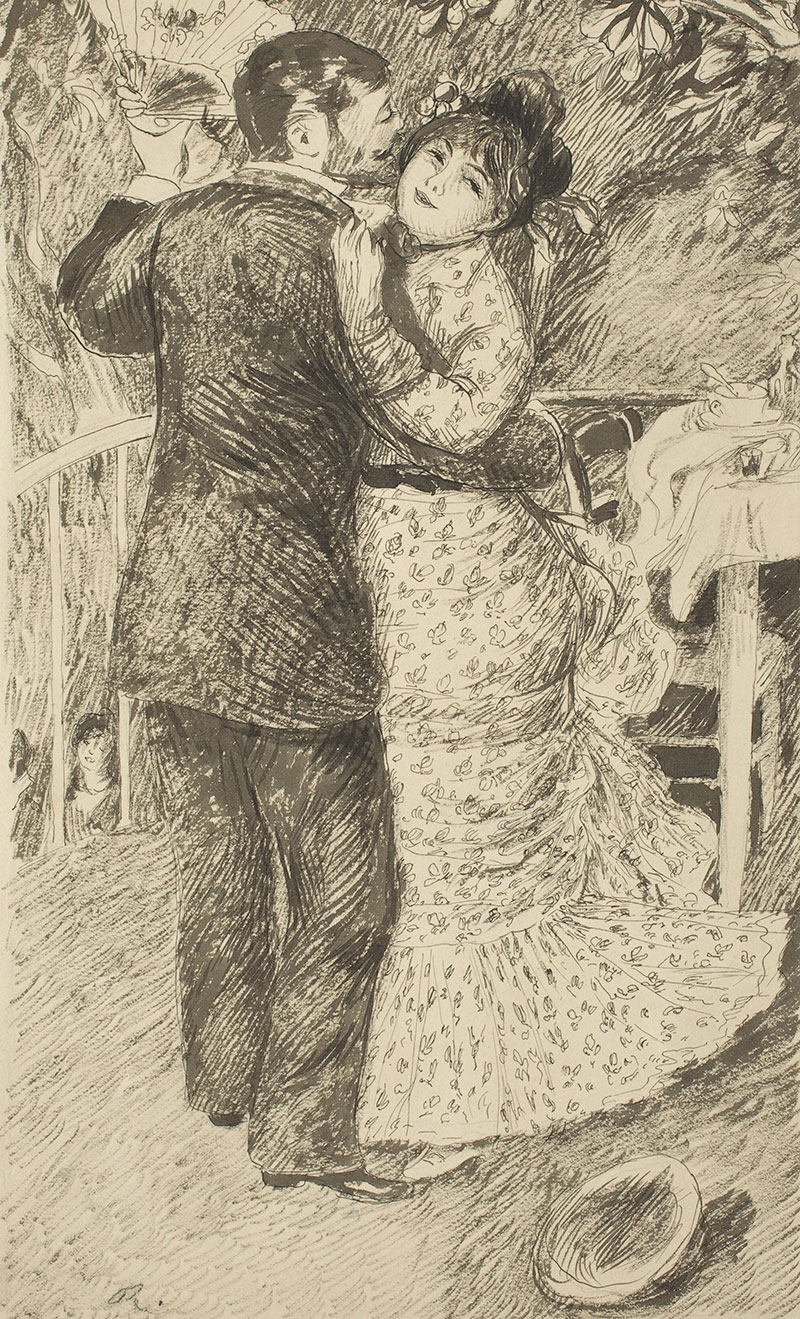

Dance in the Country, 1883. Pen and brush and gray ink. National Gallery of Art, Washington, DC, collection of Mr. and Mrs. Paul Mellon, 1995; 1995.47.65.
After a visit to Renoir’s Paris studio in January 1886, the artist Berthe Morisot—his friend and fellow Impressionist—confided to her diary: “Renoir is a draftsman of the first order. It would be interesting to show all these preparatory drawings for a painting to the public, which generally imagines that the Impressionists work in the most casual way.”
Today Auguste Renoir (1841–1919) is recognized as a founding member of the Impressionist movement who painted vibrant, colorful scenes of everyday life, landscapes, and portraits, initially without recourse to preliminary sketches or studies. While the artist’s paintings have become icons of Impressionism, his drawings, watercolors, and pastels are less widely known. Yet from his earliest days as an artist-in-training to his very last years, Renoir drew and painted on paper.
This exhibition—the first since 1921 to be devoted to Renoir’s drawings—assembles outstanding examples of all the media on paper in which Renoir worked, from pencil, pen and ink, chalk, and pastel to watercolor, etching, and lithography. In mid-career Renoir embraced a more traditional practice of making preparatory studies, and several of his major paintings—and one plaster sculpture—are reunited here with their related drawings to reveal the processes by which he developed his ideas.
Renoir Drawings is organized by the Morgan Library & Museum and the Musée d’Orsay.
The exhibition is made possible by lead funding from the Jerome L. Greene Foundation.
![]()
Generous support is provided by Denise Littlefield Sobel; an anonymous donor, in memory of Melvin R. Seiden; Hubert and Mireille Goldschmidt; and the Pierre and Tana Matisse Foundation. Additional support is provided by the Christian Humann Foundation; the Arthur F. and Alice E. Adams Charitable Foundation; the Robert Lehman Foundation; the Wolfgang Ratjen Stiftung, Liechtenstein; the Lucy Ricciardi Family Exhibition Fund; and Robert Dance. The exhibition is supported by an indemnity from the Federal Council on the Arts and the Humanities. It is a program of the Morgan Drawing Institute.
Hello. I’m Colin B. Bailey, Director of the Morgan Library and Museum, and I’m delighted to welcome you to Renoir Drawings.
After a visit to Renoir’s Paris studio in January 1888, the Impressionist artist Berthe Morisot confided to her diary: “Renoir is a draftsman of the first order. It would be interesting to show all these preparatory drawings for a painting to the public, which generally imagines that the Impressionists work in the most casual way.”
Today Pierre-Auguste Renoir is recognized as a founding member of the Impressionist movement, who painted colorful scenes of everyday life, landscapes, and portraits on canvases of vibrant color, initially without recourse to preparatory drawings or studies. While the artist’s paintings have become icons of Impressionism, his drawings, watercolors, and pastels are less widely known. Yet beginning from his earliest days as an artist-in-training and continuing until his very last years, Renoir drew and painted on paper in a variety of media.
This exhibition is the first since 1921 to be devoted to Renoir’s drawings, and the first exhibition of its kind to take place in the United States. It brings together outstanding examples of all the media on paper in which Renoir worked - from pencil, pen and ink, chalk, and pastel to watercolor, etching, and lithography. In mid-career, Renoir returned to a more traditional practice of making preparatory studies, and a number of his major paintings—and one plaster sculpture—are reunited in our exhibition with their related drawings to demonstrate the processes by which Renoir laid out and developed his ideas.
The exhibition has been in the planning for nearly seven years, and was inspired by the gift to the Morgan in 2018 of the large red and white chalk drawing, Study for the Great Bather. It is a collaboration with the Musee d’Orsay in Paris, where the show will travel next spring.
As you move through the gallery, look for the audio symbols to discover commentary from me as well as from Sarah Lees, the Morgan’s Research Associate to the Director.
Thank you for joining us at the Morgan. We hope you enjoy your visit.
